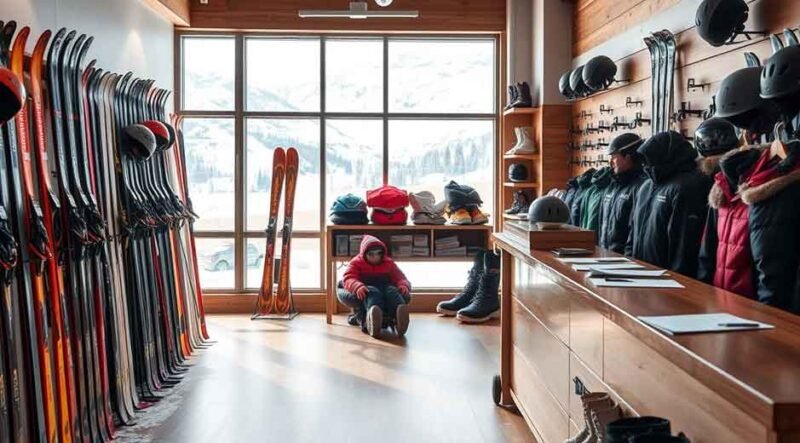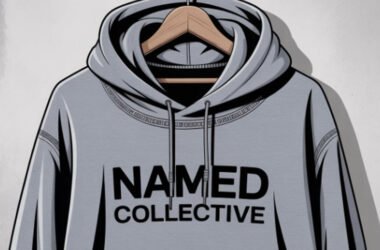For anyone new to skiing, one of the most important parts of your mountain adventure begins before you ever hit the slopes—at the ski rental shop. Your experience at the rental shop can significantly influence your day on the mountain, so being prepared helps things go smoother and ensures a better fit for your equipment. If it’s your first visit to a shop, understanding the process can ease any anxieties and help you enjoy your time on the snow. We will explore the essential steps every beginner should follow when visiting a ski rental shop, from understanding the process to making informed decisions about equipment. Whether you’re hitting the slopes in Vermont or elsewhere, these tips will help you feel more confident and ready to embrace your skiing adventure from the moment you walk into the rental store.
What to Know Before Your First Ski Rental Shop Visit
- Arrive Early and Plan for Extra Time
Timing is everything, especially on your first ski trip. Rental shops are typically busiest in the morning, especially on weekends and holidays, so arriving early helps you avoid long lines and rushed decisions. As a beginner, you’ll need extra time to be fitted correctly, understand the equipment, and ask any questions you may have. The process isn’t simply about grabbing gear and heading to the mountain—it includes detailed measurements for boots, skis, poles, and possibly even a helmet. Being early means the staff can take time to help you properly, which can make a huge difference in your overall comfort and safety.
If you plan to visit a local shop like https://onestopskiandcycle.com/ , getting there ahead of the crowd will improve your rental experience. Additionally, don’t forget to bring a government-issued ID and possibly a credit card for any security deposits or waivers. This small detail can prevent delays and ensure a smoother process. Factor in at least 30–45 minutes for your rental if you’re new. Give yourself time, and you’ll start your ski day with more energy and less stress.
- Know the Basic Equipment You’ll Be Renting
It helps to know what equipment you’ll be renting before you walk in. For most beginners, a standard ski rental package includes skis, boots, and poles. Helmets are often rented separately, but are highly recommended for safety. Each piece of equipment serves a specific purpose, and the staff will fit you based on your height, weight, shoe size, and skiing ability. The boots should feel snug but not painful, and they should offer ankle support without causing numbness or discomfort. Your skis will be adjusted in length and binding settings according to your physical stats and experience level. If you’re not sure about ski lengths or boot fit, ask questions. There’s no shame in learning as you go. The goal is to get gear that helps you stay upright and in control on the slopes. The team at a shop is trained to guide you through this fitting process, so don’t feel pressure to know everything ahead of time.
- Dress Appropriately Before You Arrive
Believe it or not, what you wear to the rental shop affects your fitting experience. Make sure to wear or bring the socks you plan to ski in, preferably thin wool or synthetic ski socks rather than cotton. Cotton gets cold and wet easily, which can make your ski day uncomfortable. Your socks influence the boot fitting, and switching later can throw off the sizing. Also, wear flexible clothing that allows the staff to measure you accurately—bulky jackets or thick layers can make it harder to fit you correctly for boots and bindings. If you’re also planning to rent clothing, ask the shop in advance what’s available. Some shops offer packages that include snow pants and jackets, while others may only rent technical gear. Goggles and gloves are usually not available to rent due to hygiene reasons, so you may need to buy them before your trip. Dressing correctly before you even walk in the door makes everything go smoother.
- Understand the Fitting Process and Don’t Rush It
The fitting process is the most critical part of your rental experience. It’s tempting to rush through it so you can hit the mountain, but taking the time to ensure everything fits right will save you from problems later. During your fitting, you’ll be asked about your height, weight, age, and skiing ability—this isn’t just for show. This information helps set the DIN (release) settings on your bindings, which is a safety mechanism that ensures your skis release during a fall to reduce injury. If your settings are too tight or too loose, it could lead to a dangerous situation. For boots, the staff will often ask you to try on a few sizes to find the one that offers support without pressure points. Don’t ignore any discomfort, even if it seems minor. A tiny pressure point in the shop can turn into major pain after a few hours on the mountain. Give yourself time to walk around the shop in the boots before finalizing your rental.
- Ask About Return Policies and Multi-Day Rentals
Once you’ve been fitted and are ready to go, there are still a few more things to consider. Ask the rental shop about their return policies—what time the gear needs to be back, if there are late fees, and whether you can switch out gear if something doesn’t feel right. Some shops allow adjustments or exchanges within the day, which is helpful for first-timers who may not get the perfect fit right away. If you’re skiing for more than one day, consider a multi-day rental. Not only is this usually cheaper per day, but it also saves you from having to refit every morning. Many shops offer options to store your gear overnight, making it convenient to pick up where you left off. Also, check whether they offer any performance upgrades or insurance coverage on the equipment. It’s worth paying a little extra for peace of mind in case something breaks or gets lost.
Visiting a ski rental shop for the first time is an exciting step in preparing for your skiing adventure. From arriving early and understanding the gear to asking questions and learning through the fitting process, every moment in the shop sets the tone for your day on the slopes. Planning, dressing appropriately, and being open to guidance will ensure you not only get the right gear but also feel comfortable and safe using it. Let it be more than just picking up equipment—let it be your introduction to a new winter passion.









